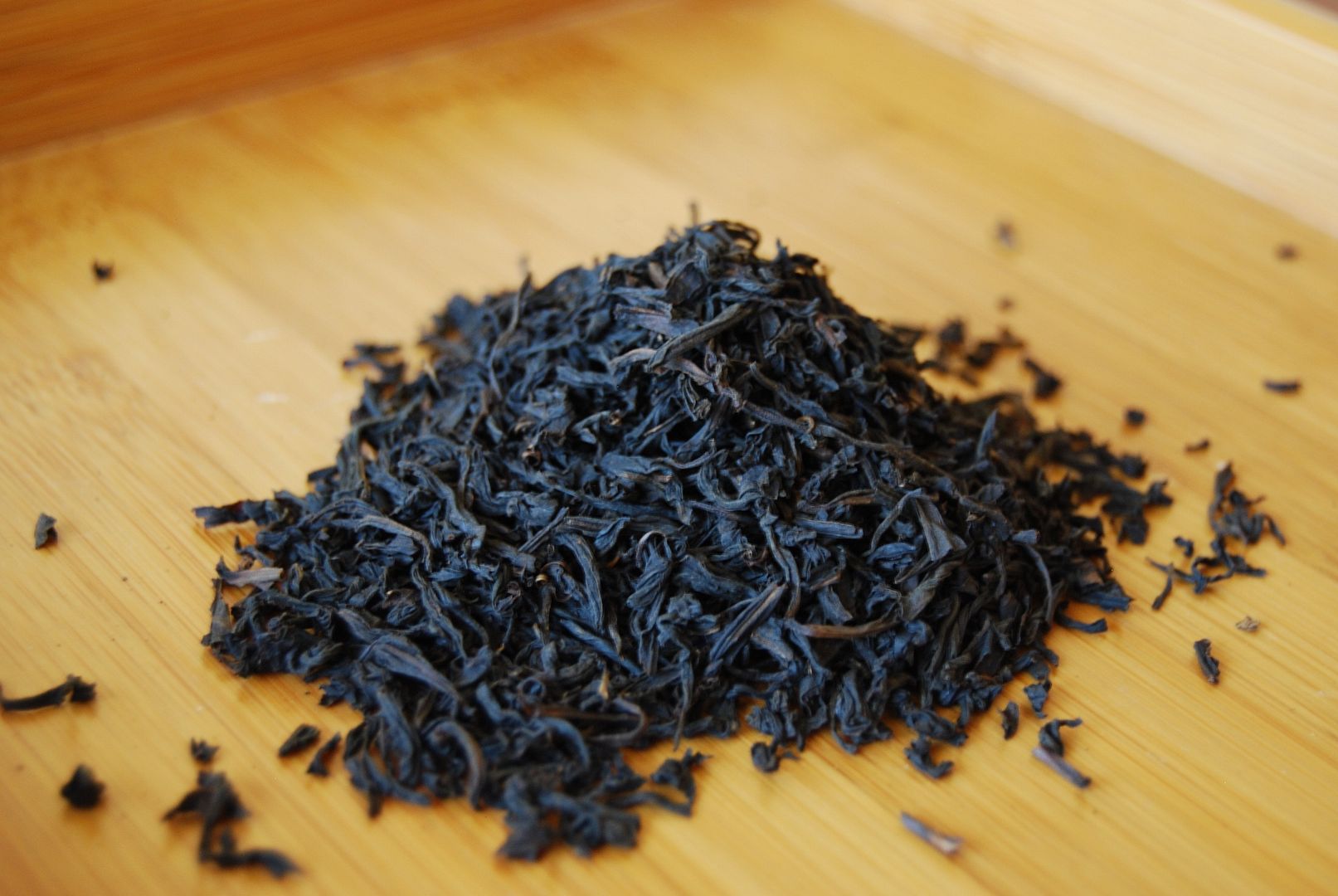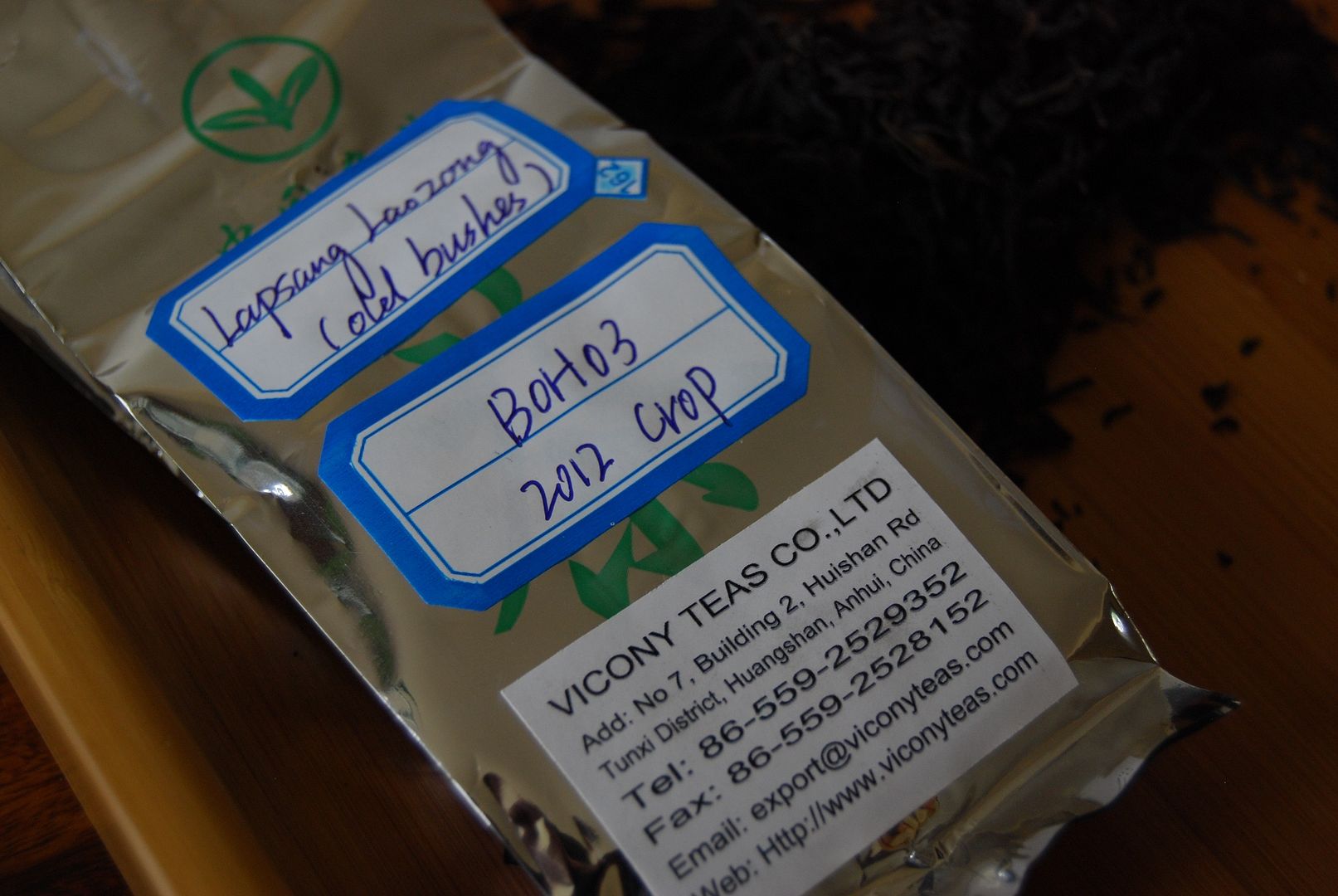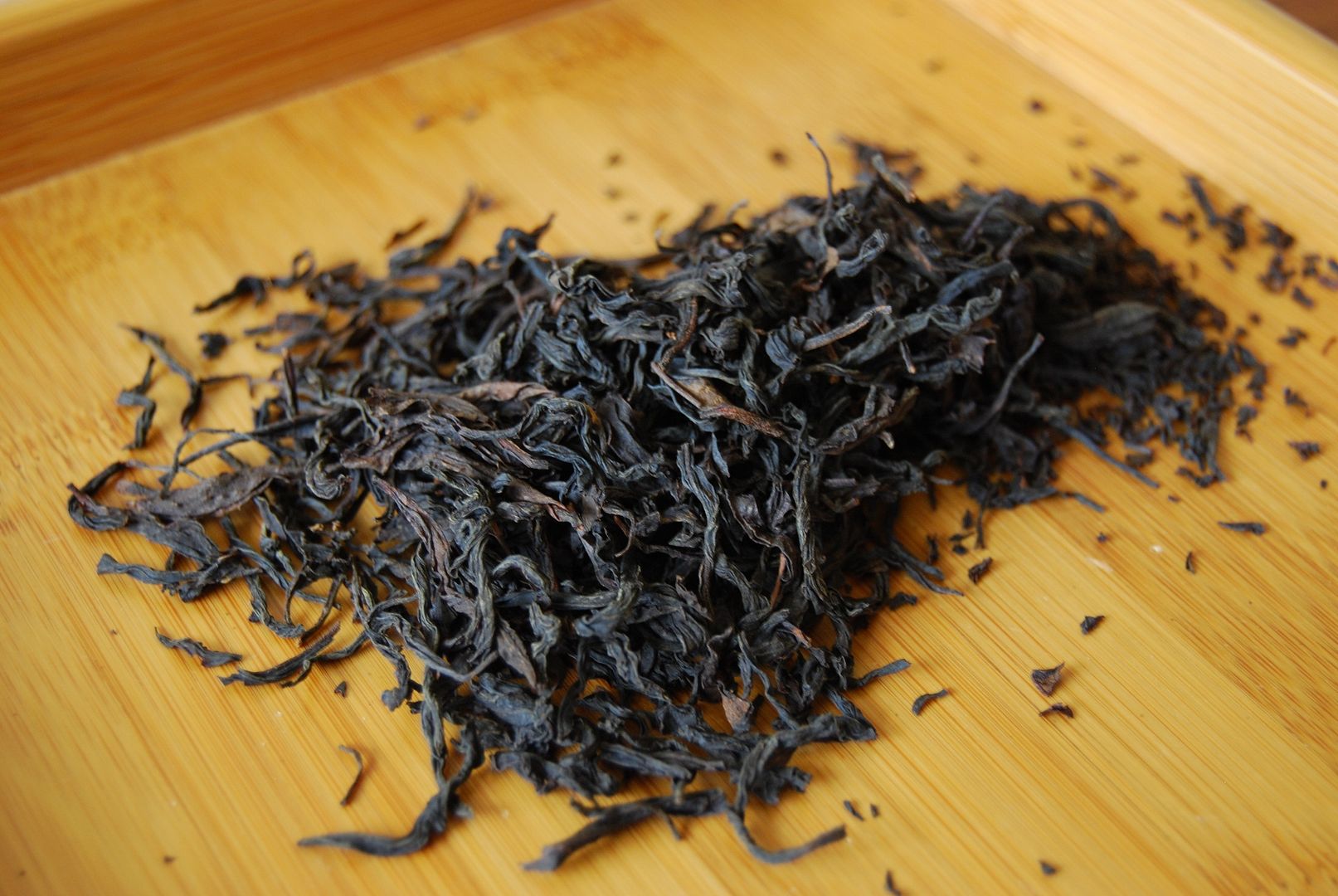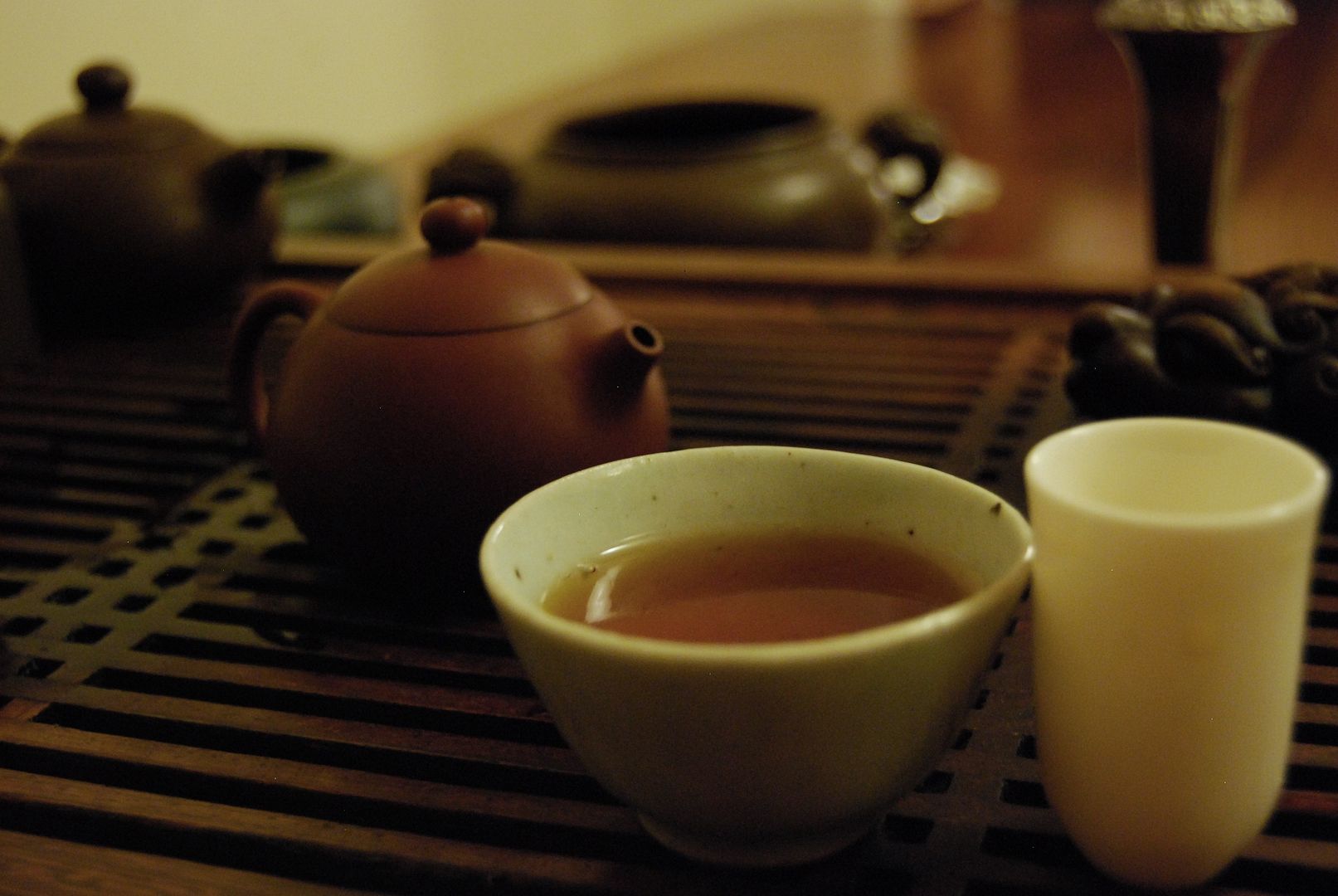It seems that I am always banging on about Tolkien's love of lapsang souchong, but it is about all that we have in common, aside from being at the same academic institution. We certainly do not share his literary or linguistic talents. That said, Tolkien probably quite rubbish at calculus. Heh.
Vicony Teas has kindly sent me a rather large pile of this most delicious of hongcha, for which I am most grateful.
Tongmuguan [where "guan" refers to a mountain "pass] is in the Xingcun village area of Chongan county, within the Wuyishan area of Fujian. This makes it Real Lapsang. As you can see from the above, this 2011 Tongmuguan Xiaozhong is sold under the "LAP21" code at Vicony.
The soup, shown below, has a vibrant heaviness that is instantly appealing, and somewhat unusual in hongcha. Along with its huigan [returning sweetness] and cooling sensations, we could be forgiven for thinking that this was hongcha at all.
This is a light tea - fresh, sweet, and clean, but very light.
You may be familiar with my own tastes in lapsang souchong, which require heavy robustness; this Tongmuguan is charming, but a little too elegant. "Where's the beef?" sort of territory, perhaps.
The "BOH03", pictured below, is a laocong [old bush] version.
It looks rather like orthodox yancha, in fact, as shown below, although it tastes like a buttery hongcha (which is very pleasant). Vicony calls this "bohea" which is a synonym for Wuyishan tea. It seemingly derives from 30-year-old bushes in Tongmuguan.
The scent of this tea is strong - and fills the nose with sweet pine. We may be onto something here. It has less pine-smoke in its character when sipped, but much in the way of cooling sensations. While the opening is a little lighter than the previous Tongmuguan, the finish is much more strong. My journal has "more hongcha than lapsang", but what it does, it does very well.
Finally, the 2011 "Dachigan" [great red sweetness] has medium-sized leaves, pictured below, falling between those of the previous two in size. It is "BOH05" at Vicony.
This also comes from Tongmuguan, but it is not smoked. Perhaps that doesn't make it lapsang souchong at all. It also has the name "Tongjunmei" [bronze junmei], which is an adaption of the famous (and frightfully expensive) jinjunmei [gold beautiful (horse)-eyebrow]. "Jin" is interesting in that it means "beautiful" but can only be applied to "jinma", a horse. I love the specificity of Chinese. The character has a horse radical that must be changed to a human (while still remaining "jun").
This tea took me long infusions to get much in the way of character out of it, and I wonder if its age is getting the better of it. What remains is gentle, honey-like sweetness. I could imagine brewing this at work, where little was demanded of it.
My search for the ultimate lapsang souchong continues...








Wonder what a horse eye brow needs to be to be called beautiful... :-)
ReplyDeleteHey now - I grew up in a place just outside Cambridge, famous for horse-racing (a town called Newmarket), where there are more thoroughbred horses than there are people... there's plenty of poesy in a horse eyebrow :)
ReplyDeleteToodlepip,
Hobbes
My favourite Lapsang is from Postcard Teas, in Derring street London. Master Xu's
ReplyDeleteNever thought I could enjoy Lapsang before it.
Essence of tea had a nice one too.